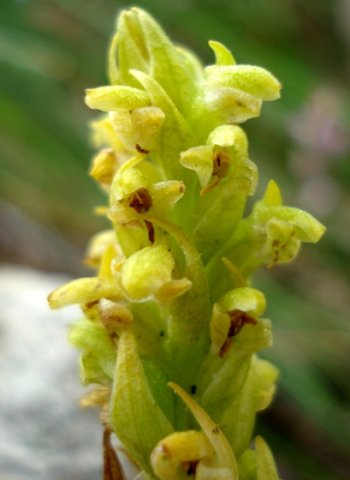Disa cylindrica flowers

Author: Ivan Lätti
Photographer: Judd Kirkel Welwitch
The lime-green flowers of Disa cylindrica grow in a dense, many-flowered cylindrical spike, giving the species its name. Dorsal or median sepals, the covering hoods over the inner floral parts, are about 5 mm long, oblong and rounded.
The flower is almost spurless in this Disa species. What little pouch-shaped spur there is may reach 1 mm in length, but is often only a fraction of that length with a fleshy callus at its entrance.
The two lateral sepals are about 5 mm long, oblong in shape with obtuse tips that curve in or out in variable orientations. The two small, erect petals inside the hood flank the rostellum. The narrow, fleshy lip of the flower is horizontal at its base, deflexed further on.
The flowers are sweet-scented, but the scent is apparently not always noticeable. Flowering is mostly triggered by fire, seasonally increasing during spring and lasting until early summer.
This species was initially classified as a Satyrium (Liltved and Johnson, 2012; www.fernkloof.com).

